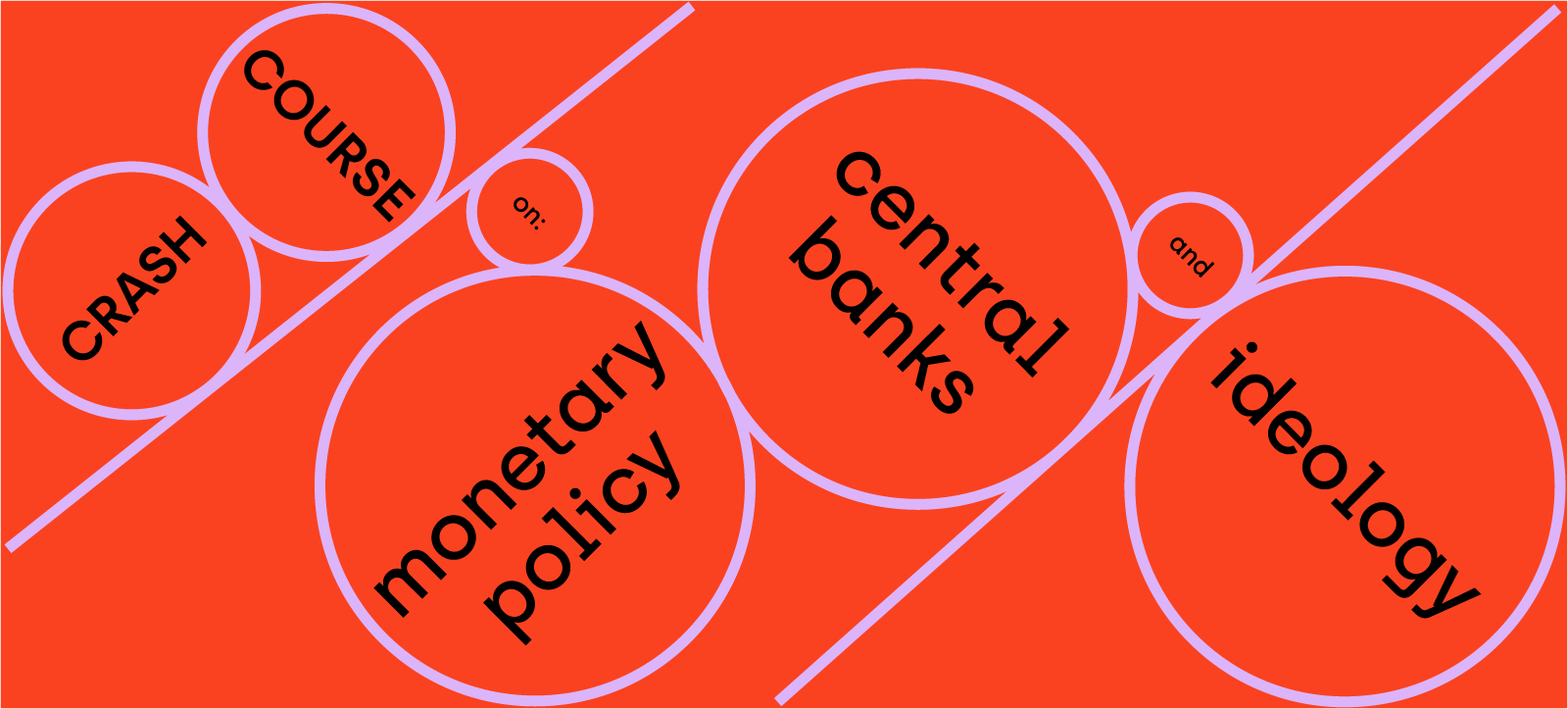Crash Course on
Monetary policy, central banks and ideology
Our new Crash Course on monetary policy, central banks and ideology is a platform designed to open up debate on how we can move out of the current crisis and make the necessary steps towards achieving social, economic and ecological justice. Crash Course is inviting global experts on monetary policy to break down complex issues in lay terms and make them accessible to all so that we can understand how to shape our global monetary policy for a fairer future.
The financial crisis of 2007/2008 caused a huge shock throughout the global north. The finance-driven economic model was rescued by extreme measures taken by central banks in developed economies, which embarked on ‘unconventional monetary policy’. One of these policies was the massive purchase of assets by central banks, primarily government bonds, with instantly created money. This asset purchasing programme was branded ‘Quantitative Easing (QE)’.
QE policies were controversial right from the start. While the community of central bankers had always displayed a unified front, QE policies led to a visible split on several issues. The Bank for International Settlements, for example, refuted the claims made by the European Central Bank (ECB) that QE money was reaching the real economy.
The Dutch and German central banks criticised the ECB’s QE policies on the grounds that they would reduce the disciplining effects of markets on corporations. In their opinion, this would result in zombie companies. Ben Bernanke, the former Chair of the US Federal Reserve, responded to the lack of monetary theory: “The problem with QE is that it works in practice, but it doesn’t work in theory.”
In the years that followed, the effects of QE became apparent. It was one of the most spectacular engines for wealth inequality. The QE money that was injected into the financial system remained circulating in the financial system instead of reaching the real economy. QE blew bubbles in real estate markets and stock markets. The asset-owning class – the rich – became even richer. Everyone else was confronted by austerity policies – after all, someone had to pay the bill.
There was also a global component. Investors searched for a return on investment as interest rates were low in the global north. One of the outlets of this massive wall of money looking for activities was a huge increase in the amount of debt in in the global south. In particular, non-financial corporations and government debt in the global south swelled through bonds issued in dollars and euros. This debt will play an important role in how the Covid-19 crash will impact on economies throughout Africa, Latin America and Asia.
The 2020 Covid-19 crash
Fast forward to the Covid-19 crash. Centrals banks intervened enormously as the global financial system appeared to go into the second meltdown in just 13 years. This time around everything is even bigger and moving even faster. But a community of engaged and critical researchers stands ready to comment on the ongoing monetary policy changes and help with formulating progressive policy proposals, drawing lessons from the previous global financial crisis.
If we are able to pump tens of trillions of dollars into the financial system to save the global economy, why not use this to finance the necessary steps to move to green societies? How can we use the Covid-19 crisis to become stronger than before? What is the role of central banks and monetary policies in this process? How can monetary policy be useful to avert a new decade of austerity and debt crisis in the global south, and to finance a global green deal instead?
These are the issues we are planning to discuss in our first Crash Course series on transformative monetary politics in a series of four webinars.
